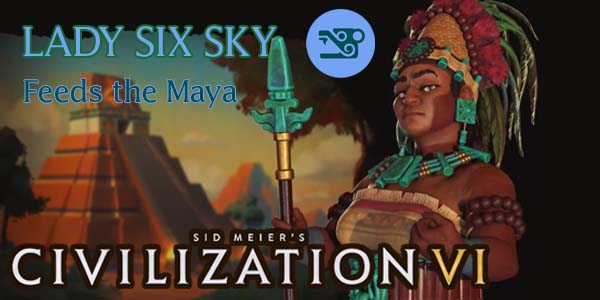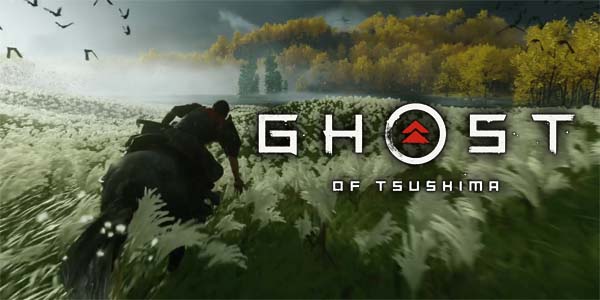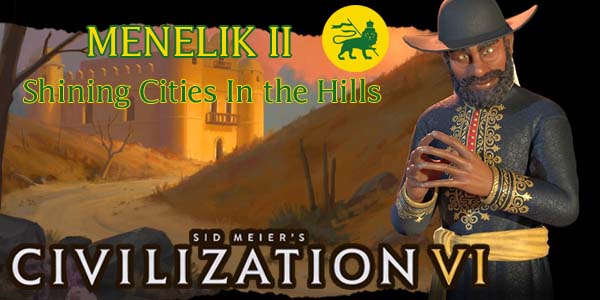
Demon's Souls is coming to the PS5. Rumors of a Demon's Souls remaster have been floating around for years, and I even wrote a blog post back in 2017 about what I'd like to see in any potential remaster or remake. But what we're actually getting goes far beyond a simple remaster. It's more than just Demon's Souls at higher resolution and with a higher framerate. Bluepont Games is re-developing Demon's Souls from the ground up, much like they did with Shadow of the Colossus on PS4.
The scope of the remake means that it's possible that Bluepoint could change mechanics. There's plenty of opportunities to improve Demon's Souls gameplay and add ease-of-use features. But there is one controversial feature that I hope Bluepoint keeps: the item burden.
I posted this defense to YouTube last weekend, but I wanted to transcribe it here as well, for the benefit of my loyal blog readers. But feel free to check out the video as well. It is embedded below:
Demon's Souls' unique design
Players of Dark Souls may be familiar with the equipment burden. If you equip too much heavy armor and weapons, your character will become burdened, which will limit your ability to dodge roll. Demon's Souls had an equip burden that worked pretty much identical, but Demon's Souls had an additional weight burden that accounted for your entire inventory -- not just the items you have equipped. This prevented the player from carrying around excess weapons and armor in your inventory so that you can switch to it at any time during a level.
Dark Souls retained the equip burden but dropped the item burden, possibly as a result of its change to a single, interconnected world. Dark Souls is famous for its brilliant world design, which created a complex vertical helix of interconnected levels. With some exceptions, every part of the map is connected to every other part of the map and the distance between can be traversed by foot. In fact, for the first half of the game, you had to travel the map on foot and take advantage of shortcuts because fast travel is not unlocked until the midpoint of the game.
There was no ludic reason to use Dark Souls' Bottomless Box, and it was removed in the sequels.
The end effect for Dark Souls is that the character does not have convenient access to a central hub location. Firelink Shrine fills a similar role as the Nexus of Demon's Souls, but you cannot warp to for the first half of the game; you have to walk. This means that you can't easily dump excess gear or items at Firelink, which means you have to carry everything with you, which means the Item Burden of Demon's Souls doesn't make much sense. Granted, From included a Bottomless Box item that allows you to stow away excess gear at any bonfire. They could have easily just built the Bottomless Box functionality into the bonfires by default and maintained the Item Burden. But they opted not to, and the lack of an Item Burden mechanic makes the Bottomless Box completely unnecessary. In fact, the sequels to Dark Souls did not include the Bottomless Box at all.
Demon's Souls has a central hub location (the Nexus) that makes it somewhat convenient to drop off or pick up equipment on your way between archstones. [More]

Firaxis will be releasing Civilization VI DLC packs with new game modes, new civilizations, and new leaders through March of 2021. The first such "New Frontiers" pack released in May of 2020 and included two new civilizations: the Maya and Gran Colombia.

For future releases that include multiple leaders or civilizations, I may put up polls on Patreon to let my Patrons decide which civ or leader to cover first (if Firaxis gives enough advance notice). I may also put up polls asking if my Patrons would prefer that I make guides focused on the new game modes. So if you would like to vote on which content you would prefer to see sooner, I hope you'll consider supporting the creation of this content on Patreon.
The group of peoples collectively known as the "Maya" occupied the Yucatán region of Central America. The Maya never unified under a singular state, instead consisting of a variety of theologically-governed chiefdoms and city-states, whose elites engaged in court intrigue against each other. Despite never being unified, the culture is well-known for its sophisticated writing, architecture, mathematics, astronomical observations, and its calendar system.

The Maya are perhaps most famous in popular culture for their "mysterious" disappearance, but this is mostly the result of popular misconception. It is true that large, classical Mayan cities were abandoned in the 8th and 9th centuries, but the decline is more gradual, and the civilization did not suddenly collapse overnight. Its population and power centers simply migrated north, where the Maya continued to flourish until the Spanish conquistadors conquered them. Though the exact cause(s) of the decline and migration is still a hotly disputed topic of modern archaeology. It is very likely that environmental factors played a large role, as the Maya built many of their cities in dense jungle, with thin soil and limited access to water, where they would be highly susceptible to drought and disease. In fact, the decentralized nature of the Maya allowed many remote Mayan villages to survive the Spanish conquests barely aware that anything had happened. Because of this, more than 6 million Mayan descendants still occupy the ancestral lands and speak Mayan languages.
Wak Chanil Ajaw (also known as Lady Six Sky) was the daughter of the chieftain of the city of Dos Pilas who's marriage was arranged with a prince of Naranjo in order to bring Naranjo into the Calakmul–Dos Pilas alliance. In the meantime, however, Naranjo engaged in its own conquests, and by the time Lady Six Sky took over as ruler of Naranjo (possibly as an informal regent for her son), Naranjo already had its own small empire going. As queen regent, she is believed to have acted as a warrior queen, and went on to successfully conquer several other Mayan city states. Her victories are depicted on several surviving monuments.
DISCLAIMER:
Civilization VI is still a "living game". Strategies for the game (and for specific leaders and civs) may change as Firaxis applies balance patches, introduces new features, or expands the game through further DLC or expansion packs, or as the Civ community discovers new strategies or exploits. As such, the following strategy guide may change from time to time. I will try to keep it up-to-date, and will make notations whenever changes are made. I'll also post links in the official 2K forums and CivFanatics, where I'll also report any changes made. If possible and practical, I will try to retain the original content of the strategy for posterity.
I welcome any feedback or suggestions that readers wish to offer. Feel free to post on the linked forums, or by posting a comment at the bottom of the page.
This guide is up to date as of the release of the "New Frontiers" August 2020 Update (ver. 1.0.4.8)
Lady Six Sky likes to build a tightly-packed core of highly-defensible cities improved with farms and plantations to feed her population. Cities that she builds or conquers beyond this tightly-packed core will less productive. [More]
8e30db96-fdf6-4db0-a88d-006411a6c91a|0|.0
Tags:Sid Meier's Civilization, Civilization VI, Maya, Lady Six Sky, ix mutal ajaw, mayab, observatory, hul'che, solitary, campus, science, plantation, farm, housing, amenity, capital
I don't know if I'm going to be buying a PS5 anytime soon (or ever), so I may not have an opportunity to play Miles Morales, which is Insomniac's follow-up to its smash hit 2018 game Marvel's Spider-Man. Instead, I decided to go back and play the DLC for the 2018 game, "The City That Never Sleeps", which I had bought, but never got around to playing. This got me thinking more about how Insomniac implemented the web-swinging mechanics, and what I hope they'll do to iterate and improve the mechanic in future games.
This blog post is a transcript of the video essay above.
I had previously mentioned Marvel's Spider-Man essay about open world gaming's possible recent inflection point, but I didn't go into much detail. Basically, I just threw it in as an example of a recent open world game in which the traversal of the map had a large mechanical focus, turning the map into more of a play space and less of a convoluted, time-wasting mission-select screen. I didn't spend more time talking about Spider-Man, however, because as much as I like Insomniac's game, and as fun as the web-swinging is, I still felt like the web-swinging traversal in that game was pretty simple, and the environment did not act as much of an obstacle to the level of the other games in those videos.
Besides, Insomniac's Spider-Man didn't stray very far from the boring checklist-inspired open world design that my earlier videos were railing against. Traversal doesn't consume resources other than the player's time, and the player isn't responsible for balancing Peter's heroic and personal lives (the tension between the two has always been a big part of the Spider-Man story), nor are there any other mechanics that try to pull the player towards one set of content to the exclusion of another, and so where you are on the map, where you're going, and how you chose to get there is largely meaningless. It's any other open world game you've played in the last 10 years. The web-swinging is just a much more stylish and spectacular method of moving from filler content to filler content.
Spider-Man games make for an interesting case study in open world game design.
Spider-Man games in total do represent their own interesting microcosm of the virtues of open world, sandbox game design, and also of the ways in which open world games can fall flat on their faces and fail miserably. Spider-Man could make for an interesting case study to go along with Death Stranding.
Since the landmark Spider-Man 2 movie tie-in game, mainstream Spider-Man games have mostly been open world games. The most notable exceptions being Beenox's Shattered Dimensions (which was pretty good) and Edge of Time (which was awful). All the other Spidey games that I've played have been open world games in which you web swing around a virtual Manhattan to reach story missions or to thwart ambient crimes. The quality of these games has been very hit-or-miss, but (as we'll discuss soon) many of them still have their unique merits.
Beenox's Shattered Dimensions and Edge of Time are notable Spider-Man games that are not open world games.
Web of Shadows, for instance, had lots of problems with its writing, pacing, and animation, but its novel aerial and wall-crawling combat mechanics made excellent use of the map's verticality in ways that other Spidey games (and open world games in general) rarely even approach. I won't be talking much about this game because I traded in my copy a long time ago, and I don't feel like blowing $45 of Patreon contributions on a game that I'll likely play for 10 minutes just to capture footage and refresh my memory of how the game played. So my apologies if you're a big Web of Shadows fan. [More]

I don't recall the last time I played an open world sandbox game through to the end credits prior to writing a review for it. Usually, I've made my decision about the game long before credits roll. If I like the game, I usually stop before it becomes too tedious, finish up my review, move on to something else, and I rarely ever go back to finish these games. That was the case with Assassin's Creed: Black Flag, Shadow of Mordor, and others. Ghost of Tsushima is a rare instance of me actually liking an open world sandbox game enough that I couldn't stop playing.
One of the sad ironies for me, as an amateur critic, is that I usually play a game longer if I don't like it -- sometimes all the way to end credits. As was the case with Assassin's Creed III and Shadow of War. This is because I want to find out if there's anything late in the game that might redeem it -- even if in some small way.
In this regard, Ghost of Tsushima is a rare exception. I was enjoying the heck out of the game and wanted to see how it ends before I commit to a review. It wasn't even a case of me rushing through the main story just to get it over with (as is the case with many bad open world games). In fact, I completed all the side missions (including the mythic missions), liberated a majority of the occupied towns, and found a majority of all collectibles. I might even play some of the epilogue. So I can say without reservation that I like this game! And it all begins with the presentation.
This is not a promotional still! Nor was it taken with the included "photo mode".
This is just what the game looks like!
You have to see it to believe it
Ghost of Tsushima is not necessarily the most technically impressive game that I've played. Games like Red Dead Redemption II and The Last of Us Part II have had better facial animation, lighting, textures, and/or draw distance. But where Tsushima lacks in technical capabilities, it more than makes up for in aesthetics and artistry. The environments are beautiful, and the weather effects (especially wind effects) are second to none. Whether it's fields of vividly-colored flowers swaying in the wind, or ocean waves crashing on a sandy beach, or the plum trees on a rocky mountain dropping their blossoms into the breeze, or a thunderstorm threatening over the horizon, or a shinto temple towering over a forest of golden trees, there is something pretty to look at no matter where you go.
Screenshots do not do the game justice. You have to see it in HD motion to appreciate it.
I'm not normally one to gush over a game's graphics, but Ghost of Tsushima really stands out for its environmental design. Over the crest of every hill, it seemed a majestic screenshot opportunity awaited me. Picking just one or two to highlight in this review was a real challenge. Even the best screenshots that I could capture do not do the game justice. You really have to see it in high-definition motion (without the compression of an internet stream) to truly appreciate it.
I haven't seen weather effects this good since [maybe] The Witcher III.
This game is perfect as a virtual vacation during the travel-restricted social-distancing of the COVID-19 pandemic. Or at least, it would be, if not for the densely-packed sandbox content making it so that I can't take 10 steps without running into an ambient encounter of some kind. I could be trotting along on my horse through a forest lit with the golden glow of a sunset beaming through the canopy, with the serene ambiance of the wind harmonizing with the background music of Japanese flutes. But I can't enjoy this serenity for more than 5 seconds before a pack of Mongols shows up, the flutes give way to battle drums, and it's back to the swinging of swords and showers of blood. [More]
d31e1ee5-04a3-49c4-b00e-3fb75f7ae502|1|5.0
Tags:Ghost of Tsushima, Sony, PlayStation, PS4, Sucker Punch, Japan, samurai, Mongols, Shinto, spiritualism, fox, open world, sandbox

Firaxis recently released the second civilization and leader pack for its New Frontiers DLC Pass. This pack includes alternate versions of the leaders Teddy Roosevelt and Catherine de Medicci, and the new Secret Societies game mode. The main part of the new DLC, however, is the new civilization, Ethiopia, lead by Menelik II. I expect to have the guide for Lady Six Sky of the Maya published within the next couple of weeks. In the meantime, a preview of the Maya guide is already available to my Patrons via Patreon.
Paleontologists believe that Ethiopia was one of the earliest homes of anatomically modern homo sapiens, and that humans crossed through Ethiopia on their way to the Middle East and Asia. Ethiopia is the source for some of the oldest known examples of stone-tipped human weapons and tools, dated at 279,000 years old. Ruins in Bale Mountains suggest the earliest known example of permanent human residence at high altitudes. The earliest kingdoms in Ethiopia were founded out of Semetic traditions, and the region has been heavily influenced by both Islam and Christianity, making Ethiopia a unique melting pot for all three of the Abrahamic religions. Ethiopia and Liberia were the only two African nations to retain their sovereignty during the European colonizations of Africa, and held off an invasion from colonial Italy in 1896 before eventually being conquered by fascist Italy in the lead-up to World War II.

Emperor Menelik II helped to modernize Ethiopia, and also establish Ethiopia as an independent nation after defeating the first Italian invasion in 1896. Menelik II went on to expand Ethiopia's territory and established a Council of Ministers that served long after his death and advised at least two other emperors (and conspired to depose one of them). He adopted a strict prohibition of the slave trade within Ethiopia, and is fondly remembered by the people of Ethiopia for his tremendous benevolence to the poor.
DISCLAIMER:
Civilization VI is still a "living game". Strategies for the game (and for specific leaders and civs) may change as Firaxis applies balance patches, introduces new features, or expands the game through further DLC or expansion packs, or as the Civ community discovers new strategies or exploits. As such, the following strategy guide may change from time to time. I will try to keep it up-to-date, and will make notations whenever changes are made. I'll also post links in the official 2K forums and CivFanatics, where I'll also report any changes made. If possible and practical, I will try to retain the original content of the strategy for posterity.
I welcome any feedback or suggestions that readers wish to offer. Feel free to post on the linked forums, or by posting a comment at the bottom of the page.
This guide is up to date as of the release of the "New Frontiers" Ethiopia DLC pack (July 2020) (ver. 1.0.3.31)
Ethiopia likes to build its cities in the hills. Doing so grants access to the Rock-Hewn church, which grants faith from adjacent hills and mountains. A portion of Ethiopia's hill-folk faith will be converted to science and culture. [More]
71bcd05b-0c24-4591-ace6-ddfc06d3e3e3|0|.0
Tags:Sid Meier's Civilization, Civilization VI, Ethiopia, Menelik II, Aksumite Legacy, council of ministers, rock-hewn church, oromo cavalry, Ethiopian highlands, hill, faith, religion, culture, tourism, volcano, natural disaster, resource
|

| 12 | | | | | | | 60 | | 11 | | | | | | | 55 | | 10 | | | | | | | 50 | | 09 | | | | | | | 45 | | 08 | | | | | | | 40 | | 07 | | | | | | | 35 | | 06 | | | | | | | 30 | | 05 | | | | | | | 25 | | 04 | | | | | | | 20 | | 03 | | | | | | | 15 | | 02 | | | | | | | 10 | | 01 | | | | | | | 05 |
|